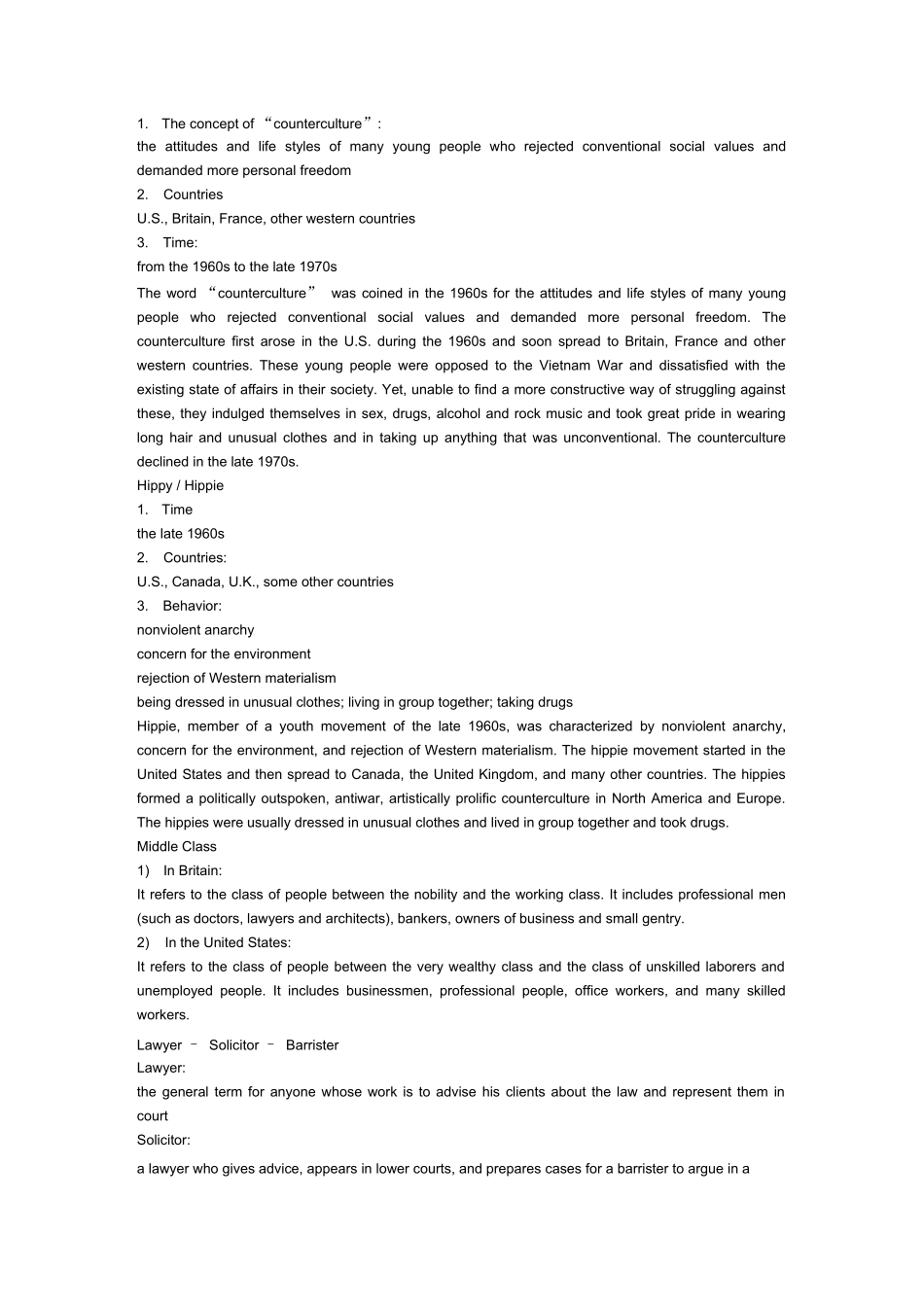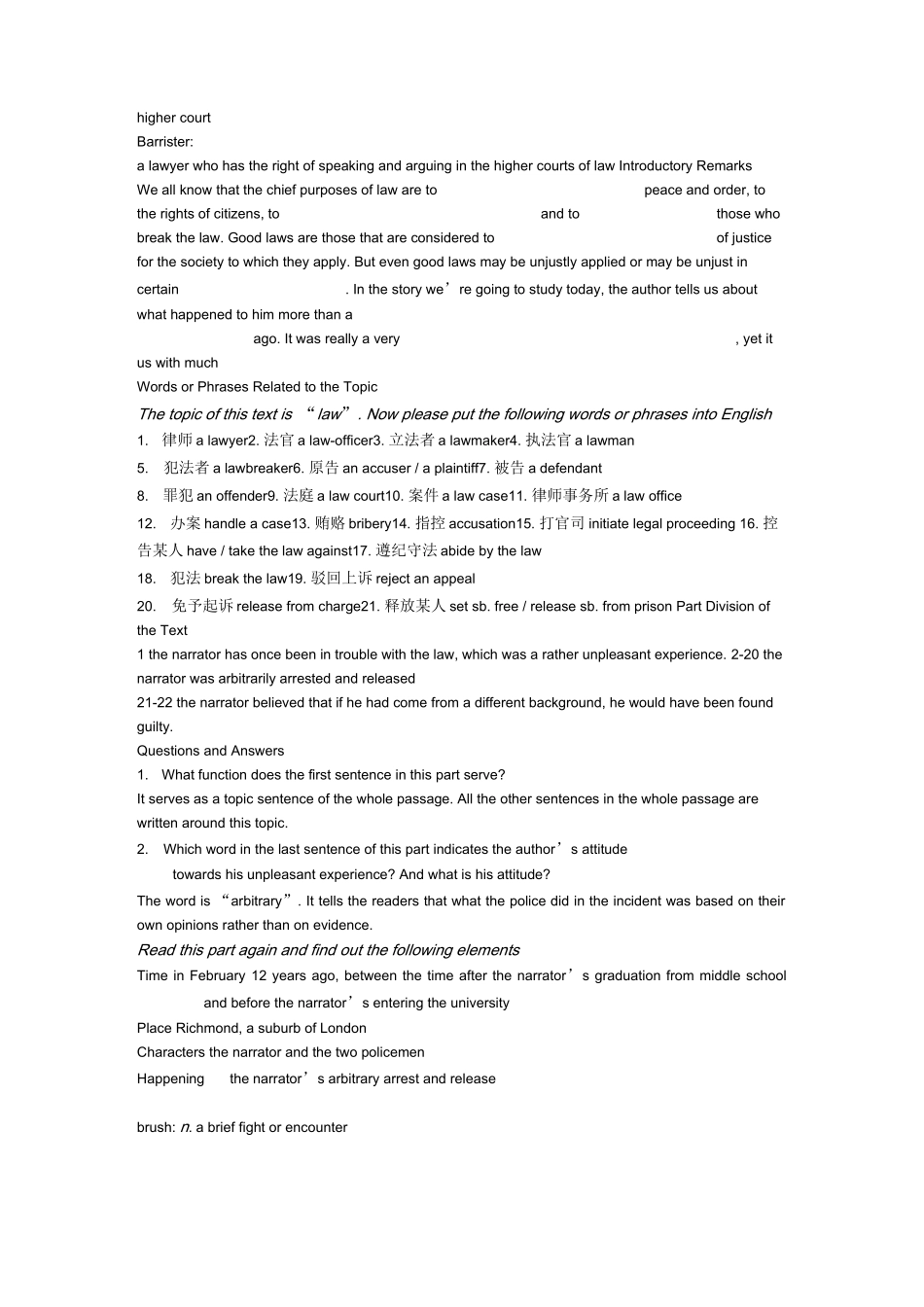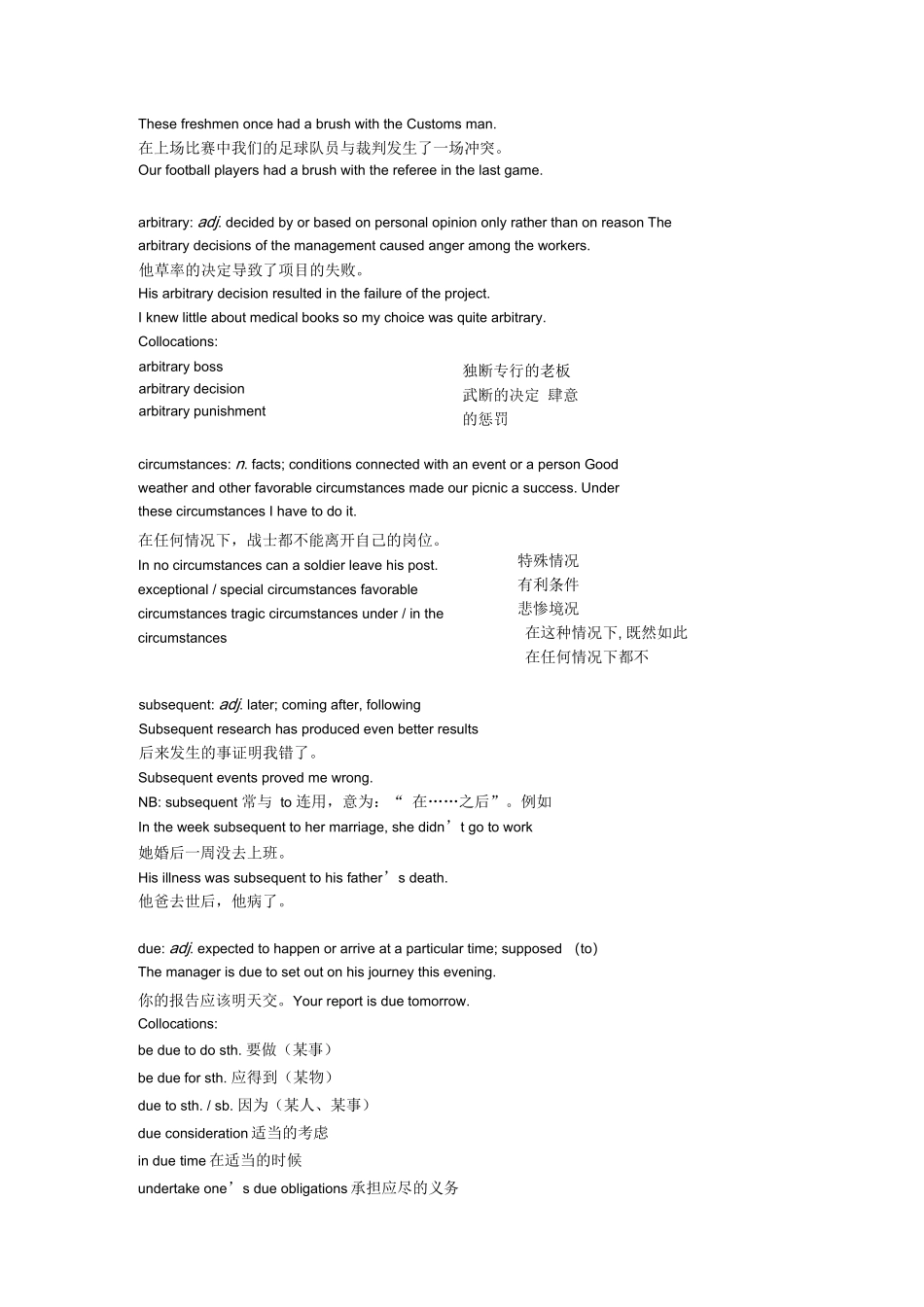1.The concept of “counterculture”:the attitudes and life styles of many young people who rejected conventional social values and demanded more personal freedom2.CountriesU.S., Britain, France, other western countries3.Time:from the 1960s to the late 1970sThe word “counterculture” was coined in the 1960s for the attitudes and life styles of many young people who rejected conventional social values and demanded more personal freedom. The counterculture first arose in the U.S. during the 1960s and soon spread to Britain, France and other western countries. These young people were opposed to the Vietnam War and dissatisfied with the existing state of affairs in their society. Yet, unable to find a more constructive way of struggling against these, they indulged themselves in sex, drugs, alcohol and rock music and took great pride in wearing long hair and unusual clothes and in taking up anything that was unconventional. The counterculture declined in the late 1970s.Hippy / Hippie1.Timethe late 1960s2.Countries:U.S., Canada, U.K., some other countries3.Behavior:nonviolent anarchyconcern for the environmentrejection of Western materialismbeing dressed in unusual clothes; living in group together; taking drugsHippie, member of a youth movement of the late 1960s, was characterized by nonviolent anarchy, concern for the environment, and rejection of Western materialism. The hippie movement started in the United States and then spread to Canada, the United Kingdom, and many other countries. The hippies formed a politically outspoken, antiwar, artistically prolific counterculture in North America and Europe. The hippies were usually dressed in unusual clothes and lived in group together and took drugs.Middle Class1)In Britain...


